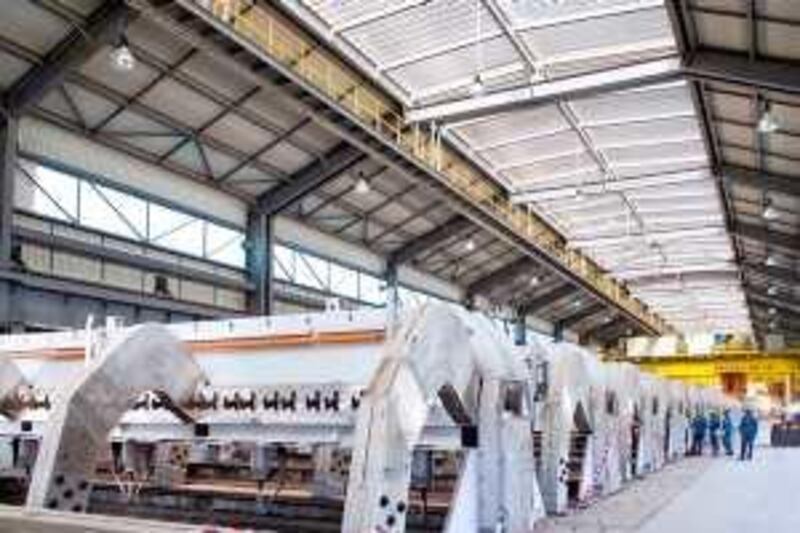Kilometres of production lines have sprung to life at the US$5.7 billion (Dh20.93bn) smelter operated by Emirates Aluminium (EMAL) in Taweelah, giving the firm a cash flow early next year but also putting it at the mercy of volatile commodity and debt markets.
The firm's chief executive, Duncan Hedditch, said it is in the final stages of raising $700 million from an export credit agency and would not face difficulties in funding what could become the world's largest aluminium production facility. However, he backed away from a spring timeline for a bond put forward by another EMAL executive, saying the firm faced "no time or other pressure". "Currently we're project-financed and now we're moving into operations, so we need to set up the financial gearing to support the business and deliver the performance we want," he said. "The bond is a market timing thing. You just watch and wait until the timing and prices suit."
Asked whether EMAL's financing would be affected by fallout from the debt standstill request by Dubai World, Mr Hedditch said he was confident that financiers "understand what this business is". "I guess we're relatively insulated from a lot of things happening in the marketplace," he said. The company's chief financial officer, Bill Campbell, said last week that EMAL would issue a $700m amortising bond in March or April next year and, in addition to funds from the export credit agency, would raise $600m from cash savings or from equity holders Dubai Aluminium and Mubadala Development.
EMAL produced its first aluminium on December 1 and will gradually increase production throughout next year as it activates each of the smelter's 756 production cells. Ten were operating as of last Thursday, Mr Hedditch said. "We're still in start-up through next year. We'll only produce, in total volume, half of our full capacity because you start from zero and ramp up," he said. The smelter can produce slightly more than 700,000 tonnes of metal a year. A second-stage expansion would double capacity and would be likely to cost less because it would be built more efficiently and probably on better financial terms, Mr Hedditch said.
"It's quite different from phase one. Phase one, we were a project; phase two, we've already got an operating business," he said. "We'll have a track record." EMAL's board is expected to make an investment decision on the project by the middle of next year. By then Mr Hedditch may have left the company as he has plans to return to Australia. Prices for aluminium futures on the London Metal Exchange (LME) have gained 44 per cent this year, tracking price increases in crude oil and in other metals. The contract hit $2,245 a tonne last Thursday, the highest since October last year.
Analysts have warned in recent months that the price of aluminium is being inflated above its true value by speculators and is due for a correction. They point to the large amount of metal in storage and the start-up next year of several major smelters. While metals analysts polled by Bloomberg expected the price to average $1,895 a tonne in the first quarter of next year, LME futures for that period are selling at $2,210.
Mr Hedditch said he was not concerned about a price bubble. "It seems as if there has certainly been some use of metal as a financial hedge, but that's also not unusual in this market," he said. "The volume of it appears to be a little larger than historically, but there's nothing about that, to me, which is terribly alarming." @Email:cstanton@thenational.ae





